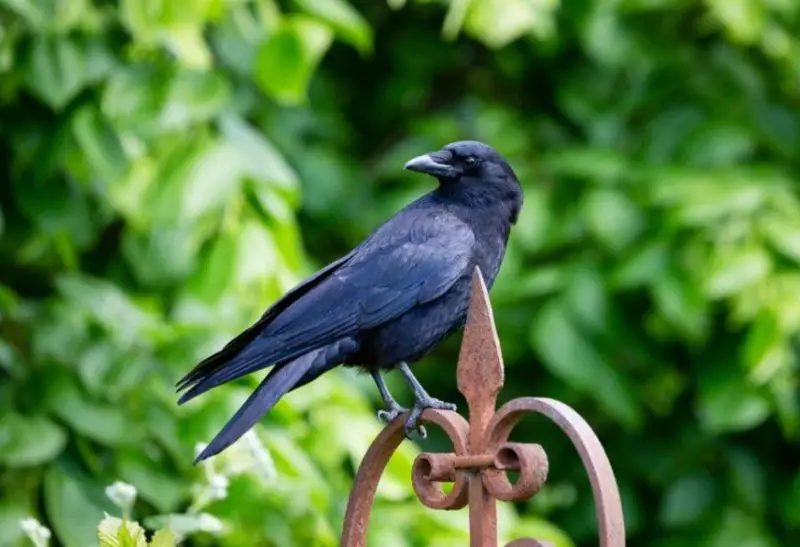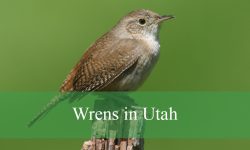Crows are intelligent, social birds with impressive problem-solving skills and the ability to recognize human faces. If you want to befriend these fascinating creatures, you need to provide the right environment and incentives to gain their trust.
In this guide, we’ll explore seven proven ways to attract crows and build a lasting bond with them.
Why Attract Crows?

Before diving into the methods, let’s explore why people want to attract crows and build a connection with them.
Natural Pest Control
Crows play a crucial role in maintaining ecological balance by consuming a variety of pests. They feed on insects, rodents, and other small creatures that can damage crops and gardens. By attracting crows, you can benefit from their natural pest control abilities without relying on chemical pesticides.
Intelligence and Interaction
Crows are among the most intelligent birds, known for their problem-solving skills and ability to recognize human faces. They can develop bonds with people, remember those who treat them well, and even bring small gifts as a form of appreciation. Observing and interacting with crows can be a fascinating and rewarding experience.
Cultural and Symbolic Importance
Crows hold deep symbolic meaning in many cultures. They are often associated with wisdom, mystery, and transformation. In folklore and mythology, crows appear as messengers, protectors, and even bringers of luck. Many people feel a spiritual or personal connection to these birds and seek to attract them for their presence and significance.
Now, let’s discuss the seven best ways to attract crows and earn their trust.
1. Provide a Reliable Food Source
One of the most effective ways to attract crows and gain their trust is by offering them a consistent and reliable food source. Since crows are highly intelligent, they quickly learn where to find food and will return to places where they feel safe and well-fed.
What Do Crows Eat?
Crows are omnivores, meaning they consume a wide variety of foods. Their diet includes both plant-based and protein-rich options, making them highly adaptable to different environments.
- Nuts and Seeds – Peanuts (preferably unsalted and in-shell), sunflower seeds, and cracked corn are excellent choices.
- Fruits and Vegetables – Crows enjoy apples, grapes, berries, and even leafy greens. Fresh or dried fruit can both be appealing.
- Proteins – They eat cooked eggs, chicken, and even small insects like mealworms. Providing protein-rich food can help attract them, especially during colder months.
- Grains – Oats, rice, and wheat make great supplementary food sources. Whole grains are preferred over processed ones.
How to Offer Food Effectively
- Establish a Feeding Routine – Crows have great memory and can recognize patterns. By feeding them at the same time each day, they will learn to return regularly.
- Use a Safe and Open Space – Choose an area where crows feel secure, such as a backyard, rooftop, or open garden. Ensure there are no immediate threats from predators or other animals.
- Avoid Processed or Salty Foods – Foods high in salt, sugar, or artificial ingredients can be harmful to crows. Stick to natural, unseasoned options.
- Start with Small Portions – If crows are new to your area, begin with modest amounts of food. As they grow comfortable, you can gradually increase the quantity.
2. Provide a Fresh Water Source
Just like food, water is essential for crows. They need a reliable source of clean water for both drinking and bathing. Since natural water sources are not always available, providing one in your yard can significantly increase the chances of attracting crows and keeping them around.
Setting Up a Water Source
- Use a Bird Bath – A shallow, wide bowl or a bird bath is ideal. Crows prefer larger water sources where they can dip their beaks and even wade in if needed. Choose a sturdy basin that won’t tip over easily.
- Keep the Water Clean – Change the water regularly to prevent algae and bacteria buildup. Dirty water can be harmful to birds, so ensure it stays fresh and free from debris.
- Add a Dripper or Fountain – Moving water is more attractive to birds than still water. A small fountain, dripper, or even a gently flowing stream-like feature can help draw crows in more effectively. The sound of running water signals freshness and safety.
3. Create a Safe and Welcoming Environment
Crows are highly intelligent and cautious birds, so they are more likely to visit and stay in places where they feel secure. Providing a safe and comfortable environment will encourage them to return regularly and build trust with you.
Choosing the Right Location
- Tall Trees or Perches – Crows prefer areas with high vantage points where they can observe their surroundings for potential threats. Trees, tall fences, or even strategically placed poles can serve as excellent perches.
- Minimal Human Disruptions – While crows can become accustomed to human presence, too much movement or sudden activity may make them wary. Choose a quiet area with limited foot traffic for feeding and water placement.
- Avoiding Predators – Crows are naturally cautious of ground-based predators like cats and large dogs. If you have pets, try to keep them indoors or away from the feeding area to ensure the crows feel safe.
Reduce Potential Threats
- No Sudden Movements – Crows are observant and can be easily startled. When refilling food or water, move slowly and calmly to avoid scaring them away.
- Minimize Loud Noises – Unexpected or loud sounds, such as shouting, clapping, or loud machinery, can make crows feel unsafe. A quieter environment will encourage them to stay longer.
- Avoid Using Scarecrows or Deterrents – Traditional bird deterrents like scarecrows, reflective objects, or fake predators can make crows wary of your space. If crows associate your yard with danger, they may avoid it entirely.
4. Offer Shiny Objects as Gifts
Crows are naturally curious and have a well-documented fascination with shiny objects. Many crow enthusiasts have reported instances where crows collect and even gift small trinkets in return for food and kindness. By strategically offering shiny objects, you can attract crows and encourage them to interact with you.
Examples of Attractive Items
Crows are drawn to reflective or metallic objects, including:
- Coins – Small, lightweight coins can catch their attention.
- Small Metal Pieces – Items like washers, screws, or bits of aluminum foil work well.
- Glass Beads – Colorful beads that shimmer in the sunlight can be very appealing.
- Foil Wrappers – Clean, crinkled foil or bits of shiny packaging can intrigue them.
How to Use Shiny Objects
- Place Them Near Food Sources – Positioning shiny objects close to food helps crows associate them with positive experiences. Over time, they may begin to view your space as a place of both sustenance and discovery.
- Observe Their Interest – If a crow picks up or carries away an object, take note. Some crows may later return the favor by leaving small “gifts” such as pebbles, twigs, or even other shiny objects.
- Rotate Objects – Keeping things fresh and varied maintains their curiosity. Try swapping different shiny objects every few days to keep them engaged and returning to investigate.
5. Communicate with Crows
Crows are highly intelligent birds capable of recognizing human faces, learning patterns, and even forming bonds with people who interact with them regularly. By consistently engaging with crows, you can build trust and establish a unique form of communication with them.
Ways to Communicate
- Talk to Them – Use a calm, soft voice when speaking to crows. Over time, they may begin to recognize your voice and associate it with safety and food.
- Use the Same Call or Whistle – A consistent sound, such as a specific whistle or word, can help crows identify you. If you use the same call every time you feed them, they will start to associate it with a positive experience.
- Respond to Their Calls – Mimicking crow sounds or responding when they call out can create a sense of interaction. Crows often communicate with each other, and by engaging in their “conversations,” you may strengthen their trust in you.
Recognizing Crow Behavior
Understanding crow behavior can help you interpret their responses and adjust your interactions accordingly:
- Head Tilts – When a crow tilts its head while looking at you, it is analyzing its surroundings and assessing whether you are a threat or a friend.
- Cawing in Different Tones – Crows use a variety of vocalizations to express curiosity, give warnings, or communicate with their group. Paying attention to the pitch and rhythm of their calls can help you understand their mood.
- Bringing Small Objects – If a crow starts leaving small items like twigs, stones, or shiny objects near you or your feeding area, this could be a sign of trust or even an attempt at gift-giving.
6. Be Patient and Consistent
Befriending crows is not an instant process—it requires time, patience, and consistency. Crows are highly observant and cautious, especially around humans. Building trust with them means proving that you are not a threat and offering a reliable presence in their environment.
Steps to Gain Their Trust
- Start by Observing – Before trying to interact with crows, take time to watch their habits. Notice when and where they gather, what they eat, and how they communicate. Understanding their behavior will help you approach them more effectively.
- Be Present Regularly – Crows remember faces and can recognize people who treat them well. By showing up in the same place at the same time each day, they will begin to associate you with safety and consistency.
- Avoid Sudden Movements – Crows are naturally wary and will fly away if they sense danger. Move slowly and stay still while they observe you from a distance. Over time, they will become more comfortable with your presence.
- Reward Positive Interactions – If a crow starts coming closer, offer food as a reward. Avoid direct eye contact, as this can be perceived as a threat. Let them approach at their own pace, and they will gradually learn to trust you.
7. Encourage Nesting
If crows see your area as a safe and resource-rich environment, they may choose to nest nearby. Encouraging nesting not only keeps crows around for longer but also strengthens their trust in you. A nesting site provides a long-term connection, as crows tend to return to the same area year after year if they feel secure.
How to Encourage Nesting
- Provide Nesting Materials – Crows build their nests using a variety of natural materials. You can help by leaving twigs, dried leaves, straw, and even soft materials like pet fur or shredded paper in an open space where they can easily collect them.
- Allow Tall Trees or Nesting Spots – Crows prefer high places for nesting, such as tall trees, rooftops, or large shrubs. If possible, avoid cutting down large trees or trimming branches during nesting season (spring to early summer) to provide them with undisturbed spaces.
- Avoid Disrupting Their Nests – Once crows have built a nest, it’s important to respect their space. Avoid getting too close, as they can become defensive and may abandon the nest if they feel threatened. Observing from a distance will help them feel more secure in their environment.
Common Mistakes to Avoid
While attracting and befriending crows can be a rewarding experience, there are several common mistakes that can hinder the process. Avoiding these pitfalls will help ensure a successful and lasting bond with these intelligent birds.
Overfeeding or Inconsistent Feeding
- Too much food can make crows dependent – While feeding crows is a great way to gain their trust, providing excessive amounts of food may cause them to rely solely on you rather than foraging naturally. It’s best to offer moderate portions.
- If you stop feeding suddenly, they may stop visiting – Crows are creatures of habit. If they grow accustomed to a feeding routine and it abruptly stops, they may move on to another location. If you need to reduce feeding, do so gradually.
Using Harmful Foods
- Avoid bread, dairy, and anything with salt or seasoning – Processed foods can be harmful to crows. Bread offers little nutritional value, and salt-heavy foods can be dangerous for birds.
- Chocolate and avocado are toxic to birds – Both contain compounds that can be fatal to crows and other birds. Stick to natural, unprocessed foods like nuts, fruits, and proteins.
Trying to Rush the Bonding Process
- Crows need time to trust humans – Even though they are intelligent, crows are naturally cautious creatures. It may take weeks or even months for them to feel comfortable around you.
- Rushing interactions can scare them away – Approaching too quickly, trying to pet them, or making sudden movements can break their trust. Let them come to you at their own pace.
Conclusion
Attracting and befriending crows is a rewarding experience that requires patience, consistency, and respect. By providing food, water, and a safe environment, you can establish a long-lasting relationship with these highly intelligent birds. Follow these seven proven methods, and soon you may find yourself with a group of loyal crow friends visiting regularly!






